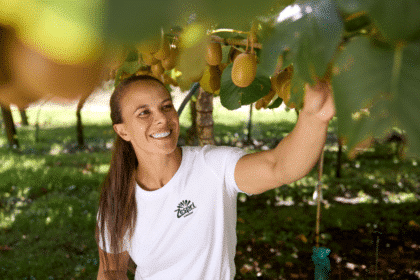A new survey from Sendle has revealed Australian small businesses are expecting a big portion of their revenue growth to come from overseas in the next 12 months, amid high interest rates and inflation.
Almost two-thirds (65 per cent) of small business owners expect up to a quarter of their total revenue growth from international markets this year. Australia’s uncertain economic outlook appears to be factoring into small business decision-making, with 61 per cent reporting that inflation has had a significant impact on their business more than they expected.
“As cost of living bites consumers at home, we’re seeing growing demand from small businesses to expand their reach in markets like the US,” said Laura Hill, managing director of Sendle Australia. “The data shows that attracting new customers continues to be the top challenge for small businesses, so diversifying their customer base across different markets is a sound strategy to weather any economic downturn and future-proof their business in the longer term”.
Small businesses modifying their business strategies for new markets
Despite the economic environment, almost half (48 per cent) of small businesses are forecasting growth of up to 25 per cent in FY25, compared to 23 per cent of small businesses in 2024. This business optimism could be due to the opportunities for growth overseas, with four in five (80 per cent) of small businesses reporting an increase in revenue growth from international markets in the past six months.
Social media will be a top growth driver to attract customers in new markets, with a quarter (25 percent) of small businesses planning to grow their social media presence and engagement. In fact, small businesses are more likely to invest in social media and marketing campaigns than they are to change their pricing strategy or negotiate with third-party suppliers for business growth.
Planning for peak not yet a priority for most small businesses
When thinking about the upcoming peak sales season, 44 per cent of small businesses are worried about slowing customer demand due to cost of living pressures. However, the survey reveals that many small businesses could be leaving peak planning too little too late, with the majority of small businesses (59 per cent) saying they’ll plan for peak season only 1-2 months out.
“Australian shoppers are increasingly bringing forward their Christmas shopping to October and November to take advantage of key sales events,” said Hill. “Our advice to small businesses is the earlier you can plan for peak, the better. Start looking at your sales, marketing and shipping strategies now to ensure you’re in a position to capitalise on consumer demand later.”
In addition to enticing consumers with free shipping, with over half (58 per cent) of small businesses planning to offer free shipping this year, with the favoured option of $100 AOV, some small businesses are looking for ways to make their business more green. Almost a quarter (24 per cent) of small businesses say sustainability is a high priority, while 82 per cent of small businesses plan to roll out sustainable packaging in the next 6 months.
Renewed calls for delivery options and infrastructure sharing among carriers
Over half (53 per cent) of small businesses are using multiple couriers to get the best price. Access to shipping services in and out of regional and rural areas continues to be a bugbear for small businesses, with over half (55 per cent) of small businesses wanting to see more ecommerce parcel delivery options / access to regional and rural Australia to help small businesses.
Infrastructure sharing with lower cost carriers (51 per cent), regulation to drive down prices (44 per cent) and improved competition (44 per cent) are next on the wishlist for small businesses, when it comes to actions they want to see to improve the postal and parcel industry in Australia. The survey echoes findings from a 2024 survey of 600 retailers across rural and remote areas by Roy Morgan that found 61 per cent of retailers were of the view that “challenges and constraints with currently available delivery services to these areas was negatively impacting their business”.
“When there is no choice, small businesses suffer,” said Laura. “The monopoly that Australia Post has over Independent Community Licensed Post Offices (LPOs) in regional and rural areas effectively locks out other competition and contributes to higher shipping prices and fewer options. That’s why Sendle is calling on Australia Post to open up its taxpayer-funded last mile infrastructure to other carriers to provide more delivery options for regional and rural Australia”.








